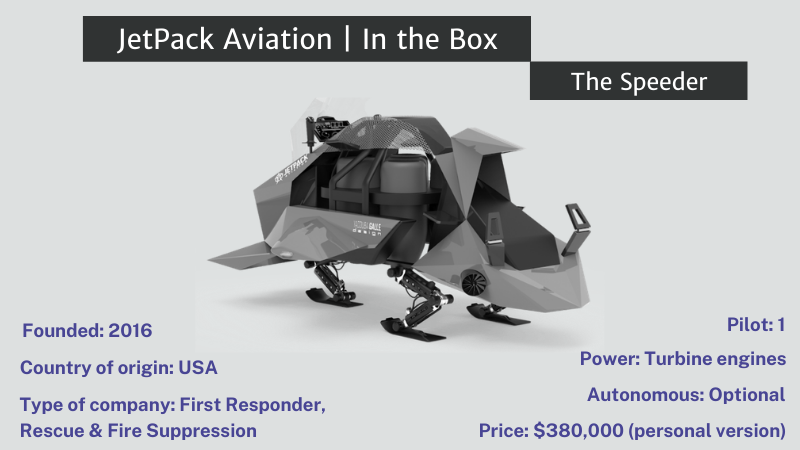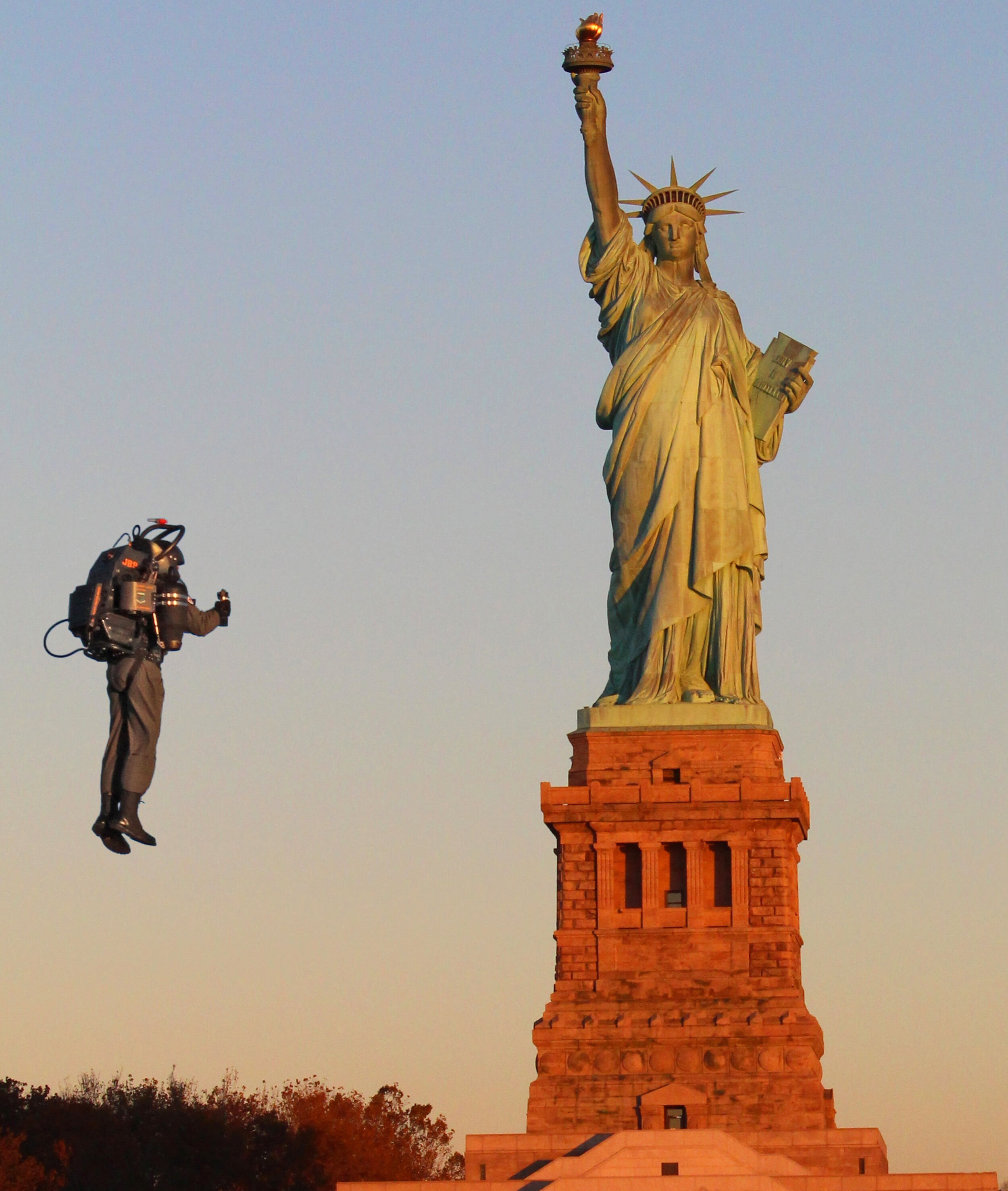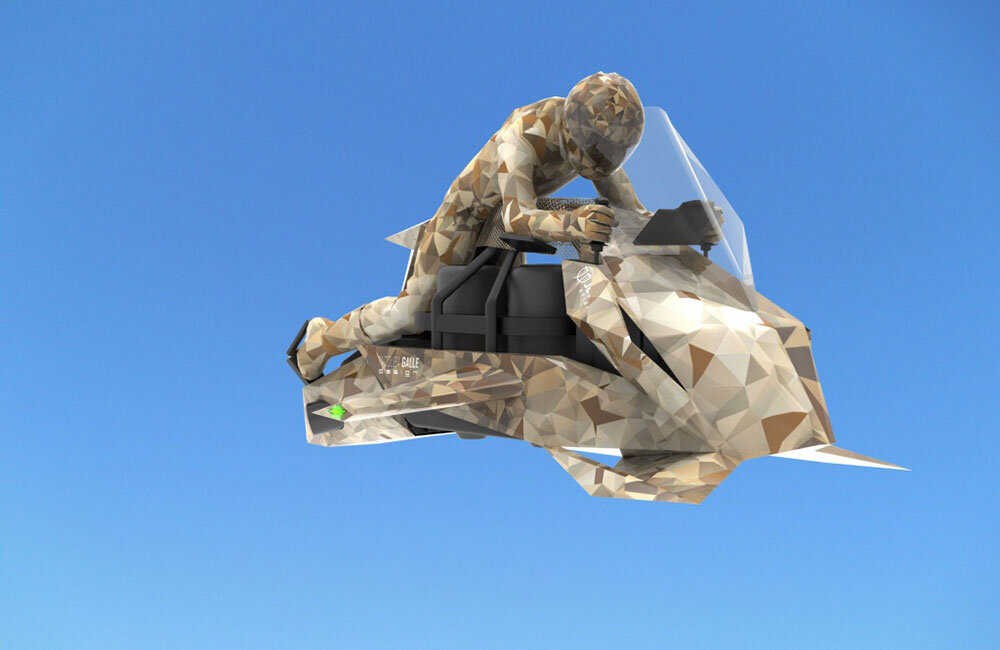Revolution.Aero Uplift: JetPack Aviation – sci-fi meets VTOL emergency medical services

exc-602bd385e96acc025d00de5f
It’s the stuff of dreams: Strapping on a jetpack and blasting off into the sky. But David Mayman, or Mr Jetpack, is turning dreams into reality. While those needing emergency medical products may be exceedingly grateful, the origins of the technology are less peaceful.
He built a real-life, functional jetpack fuelled by turbine engines, which is certified to fly under a Special Airworthiness Certificate (experimental category). This was something he always wanted to do, he told Revolution.Aero. So, when he sold his Yelp-equivalent (social networking) business in Australia, it seemed like the best time to start.
JetPack Aviation (JPA) was launched in 2016, but he had been working on the technology with various experts since 2008. Now, after flying the jetpack for hundreds of hours – including one flight around the Statue of Liberty – Mayman and the company are looking to enter the first responder/ emergency medical services (EMS) market.
Soon after the Statue of Liberty flight, JPA entered into a cooperative research and development agreement with the Navy Special Warfare Development Group (NSWDG).
“We trained one of their operators and did a number of demonstrations. They wanted to carry more payload than the jetpack could carry – even though it was good for 110kg or 220lbs. And they also wanted something an operator could fly with little of training,” Mayman told Revolution.Aero.
NSWDG needed something that a person could fly with a short briefing time, rather than hours of training. Hence, the company developed The Speeder – a jet-powered personal vehicle, with three modes: piloted, remotely piloted or fully autonomous. In Mayman’s words, it is the size of an average sized kitchen table.
“The P1 – which we are flight testing now, in Camarilo, California, is capable of either flying piloted or basic autonomous missions; including some see-and-avoid missions.”
JPA has plans for a public flight before this summer.
Military and civilian use cases
Mayman hopes to test the vehicle for many unmanned flight hours with the military before the company pursues a civilian certification.
“We have a relationship with the special forces – army, navy, marines, air force – in every branch of the military. There are a set of missions or use cases they would like to test.”
The first use case will be transporting lifesaving, urgent medical supplies, says Mayman. He is certain that The Speeder will be able to achieve speeds that are impossible with any ground-based transport system or helicopters.
“We are working with one of the largest EMS providers in the world to understand better the way that an aircraft like this would fit into a first responder application. In parallel, we are working with state and county fire departments such as California Department of Forestry and Fire Protection’s CAL FIRE, in the US, to reduce time on these missions.”
One of the biggest selling points, says Mayman, is the fact that The Speeder is extremely portable for defence purposes. “You can have it with you at all times. You do not have to call the aviation unit to bring this in.”
Turbine engines or electric propulsion
It is widely known that eVTOL aircraft have yet to find the energy density (ED) that can support longer trips. This is why Mayman and JPA have decided to use jet turbines for now. “The very smallest form factor that you could create with electric propulsion would be roughly five to six times the size of aircraft for the same weight. And then you might be doing a quarter of the speed. It might take 10 years, or even substantially longer, for battery energy density to match hydrocarbon ED, even allowing for our low thermal efficiency.”
This is not to say JPA hasn’t considered electric propulsion. 30% of the company’s engineering time is spent on it. Mayman said it would aim to keep a similar airframe and flight code, when the time comes, but move to electric propulsion.
“Initially, it might be through a serial hybrid propulsion system, rather than a battery only solution. That will be next.” Mayman touches on an important aspect of JPA concept because it is difficult to keep the same airframe size and speed requirements for highly urban environments. It is imperative that the aircraft be able to land within 50 ft of the target and you can’t do that with an eVTOL aircraft, he says.
Otherwise, the effectiveness for EMS missions using The Speeder will not be much different from ground-based paramedic services. Research suggests that landing any further away than 300 ft means there was no point in making the trip by air. “Moving the medic from the landing point to the sick or injured person just takes too long.”
A study by Bain & Company shows that improving paramedic response by only one minute can reduce loss of life in cases of stroke and heart attack by 10%. Getting medics into the air could save over 150,000 lives per year just in the US.
Investor box:
Self-funded
Y Combinator accelerator programme – $150,000
Seed round – $2.5m (Draper Associates, Jaan Tallinn)
Investor friendly
Mayman said: “Investors bought in on our relationship with Department of Defense [DoD] and EMS world and the leadership in turbine VTOL technology.
“We were lucky enough to be accepted into the Y Combinator accelerator programme, in 2019.” This saw $150,000 invested in the company. Although Mayman says he had already funded the company to the tune of several million dollars himself, which helped give a lot of confidence to investors.
Getting $2.5m in seed funding after that was not very difficult. “We attracted Draper Associates, Jaan Tallinn – one of the co-founders of Skype – and a series of other great investors.”
JPA will be following a service model, said Mayman. “Initially, we would do the build in-house. We do all of our carbon fibre and metal work as well as our flight control systems. We would be going for an operating model rather than a sell or lease model.”
The operating or service model will provide a high level of shareholder value, said Mayman. “It might be a partner company’s paramedics that we train to do the flying, but we would be very involved in the operations, the maintenance and establishment of the infrastructure.”
JPA has received interest from the Singaporean special forces, as well as border protection for another southeast Asian country. “We are looking to do flight testing in Austrian and German landscapes – where the population is spread out sparsely across villages unlike the US.”
The company plans to build its third full-scale prototype, P3, after finishing flight testing of P2 this year. Then, it plans to start its series A funding round in preparation for commercial service.
“In 2023, we could be seeing cargo versions being used by the DoD. And then by 2024-25, we can see manned versions being used. Sometime after that, we might be looking at the public use certification in the US.”
We would love to know if you dream about flying after you read this. They say, “if you can dream it, you can do it”, which in this case is not entirely inaccurate. For $4,950, you can fly the JPA jetpack for two days with the team in the California.
The Personal Take-Off
David Mayman, JetPack Aviation









